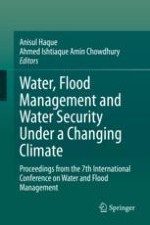
2020 | OriginalPaper | Chapter
An Overview on Isotopes in Precipitation of Bangladesh
Authors : Abdul Hadi Al Nafi Khan, Md. Abdul Quaiyum Bhuyian, Md. Ariful Ahsan, Farhana Islam, Md. Masud Karim, Md. Moniruzzaman
Published in: Water, Flood Management and Water Security Under a Changing Climate
Publisher: Springer International Publishing
Activate our intelligent search to find suitable subject content or patents.
Select sections of text to find matching patents with Artificial Intelligence. powered by
Select sections of text to find additional relevant content using AI-assisted search. powered by